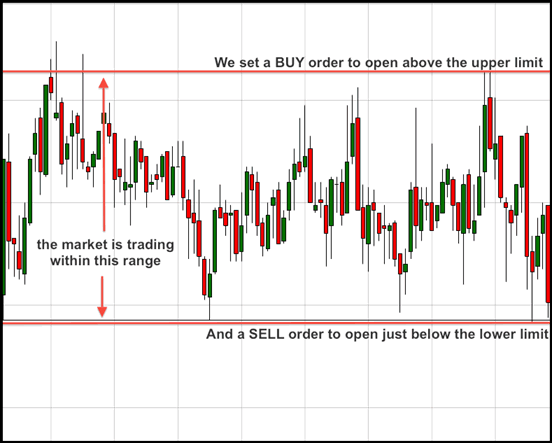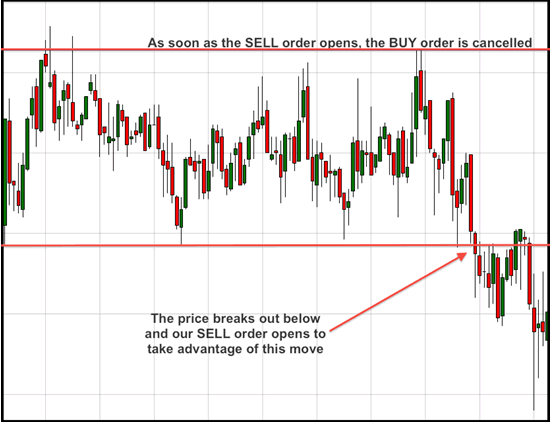 I’ve been following a trading strategy that uses OCO orders for some time now – it’s a great trick to save you from screen time, and also to spare yourself some of the rollercoaster emotions that come with trading.
I’ve been following a trading strategy that uses OCO orders for some time now – it’s a great trick to save you from screen time, and also to spare yourself some of the rollercoaster emotions that come with trading.
I’ll be bringing you more details on this specific system next week, but thought it would be worth giving you a heads-up now.
How OCOs work, and why you should know how to use them
Amongst the jargon that traders like to use are all the different types of “order” that are available through most brokers.
An “order” is nothing more than an instruction to your broker to open or close a trade on your behalf at a specific price.
When the market reaches the level you’ve specified, that “order” is “filled” or “triggered” for you automatically (you don’t need to do anything).
But understanding types of order and how you can use them is a critical part of your trading education – they allow you to plan and (more importantly) to stick to that plan. With orders, you should get into and out of your trades exactly where you’re meant to – there’s no dithering over BUY or SELL buttons, wonder whether you should take the plunge or not!
Your basic order types
The most basic type of order is a Market Order – this is just buying or selling at current market price. This is nothing more than simply hitting the BUY or SELL button.
However, Limit Orders and Stop Orders are a little more involved – they require you to set the price that you’d like to be filled at.
A Limit Order is an instruction to close out all or part of a position when the price moves into a more favourable position, so you’ll be opening a SELL above the current market level, or opening a BUY below the current market level.
A Stop Order is slightly different – in this case you’re instructing your broker to either buy above the current market level or to sell below that level (at a price specified by you). Therefore, you’re looking to place an order at a less favourable price.
Most brokers will automatically set your stop and limit orders on an open position to cancel out if one is hit. So, let’s say that you’ve bought the FTSE at 5800 with a profit order at 5850 and a stop order at 5750 – if your profit order is hit, the stop order will be automatically cancelled. Likewise, is the stop order is hit, the profit order will be cancelled.
The type of order I want to look at today works in much the same way …
OCO stands for “one cancels the other”. The way an OCO order works is that if you have two orders in the market, you can link them so that if one of them is executed, the other is automatically cancelled.
So, why is this type of order so useful?
OCO trading techniques
First, let’s look at some of the ways in which traders use OCO orders …
One of the traditional ways in which traders have used OCO orders was around high-impact new releases and economic announcements. When these bits of news come out, we know that the market is going to make a big move, but don’t know which direction it’ll go in.
Therefore, traders will use an OCO order to enter either long or short – so, when the market makes its move, the trader can be confident to be in, one way or the other.
In theory, this is a great trade idea. But trading any economic data has always been problematic because of the sheer speed and size of these movements, meaning that we’ll often not get in or out at the prices that we want (despite our cleverly arranged orders).
Another, more manageable, way to use OCOs is when the price has been stuck in a range, and you want to be ready to profit when it breaks out of that pattern …

In this chart, we can see that the price has been stuck in a sideways pattern, bouncing between an upper and lower level. Eventually, the price will break out of this pattern, and often this kind of breakout is followed by a significant move.
So, we can set up a SELL order to open if the price moves down, and a BUY order to open if the price moves up. This way we can profit from the move as soon as it happens – no dithering and no missing the best price.
This is what happens …

The benefits of OCO orders
Using OCO orders is a good way to semi-automate your trading.
I’m not talking about handing over the reins to some forex robot or anything – just freeing up your time, and taking some of the stress out of the process.
It means that you take the emotion out of decision-making – the trade is opened/cancelled for you. So you’re not wasting time watching your screens, and you’re not wondering “shall I?” … “shan’t I?”
